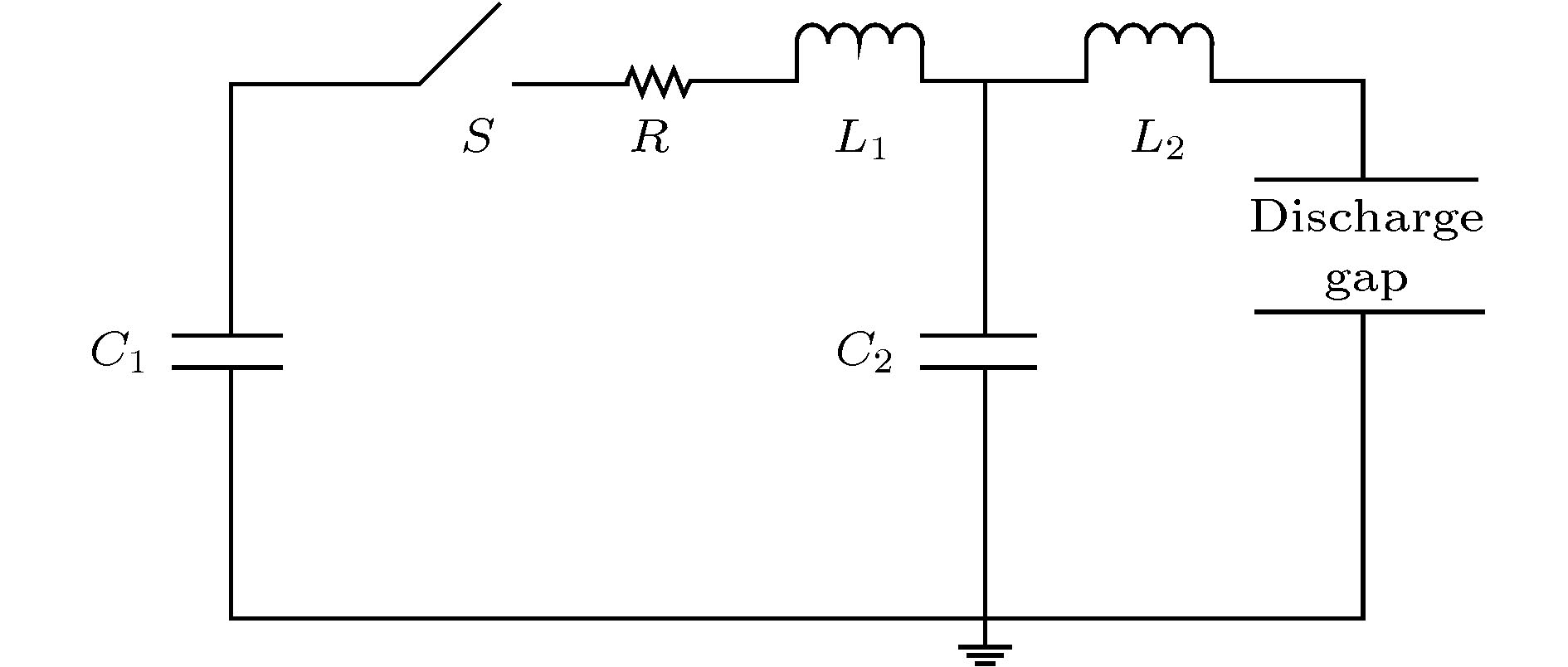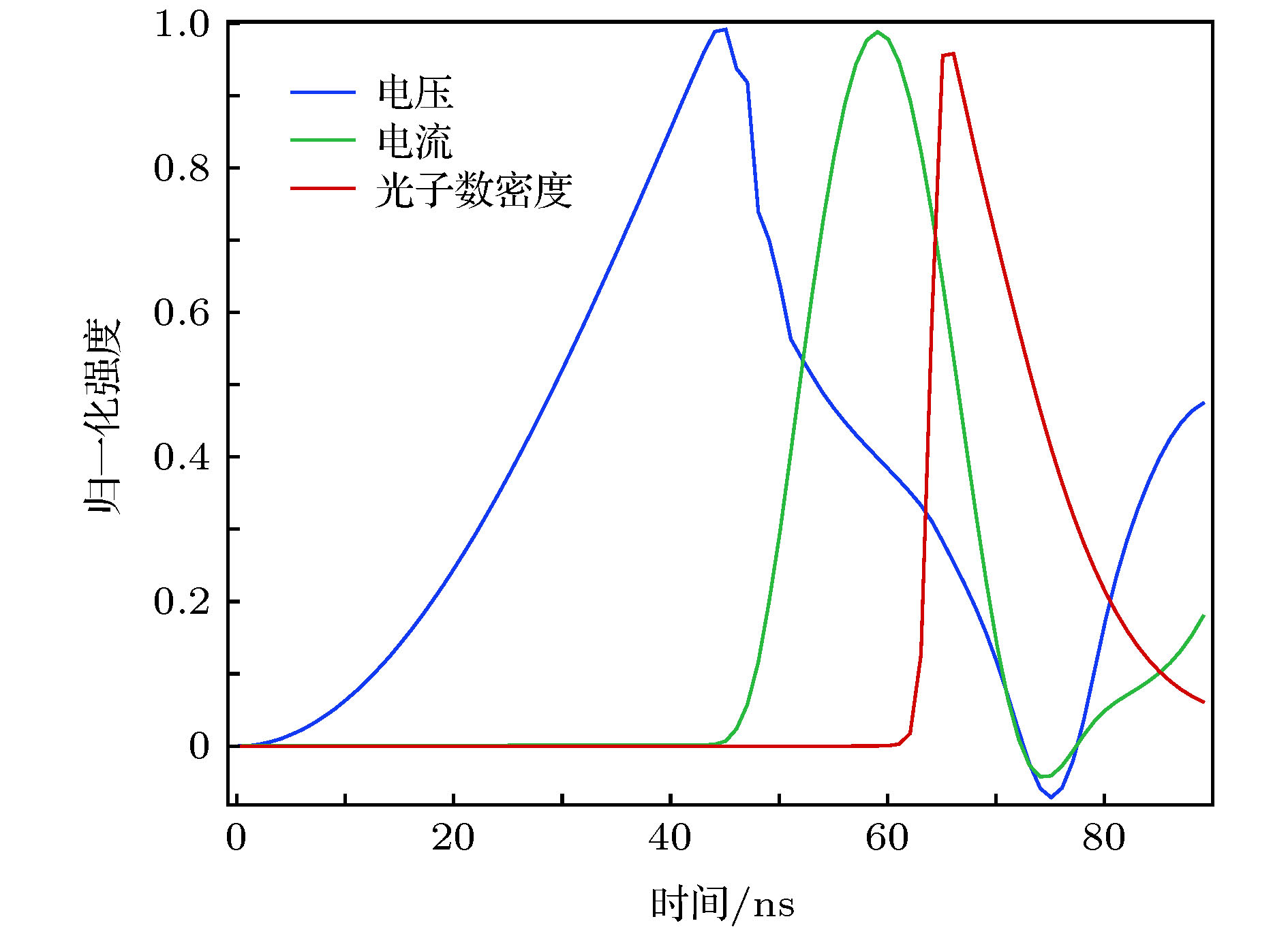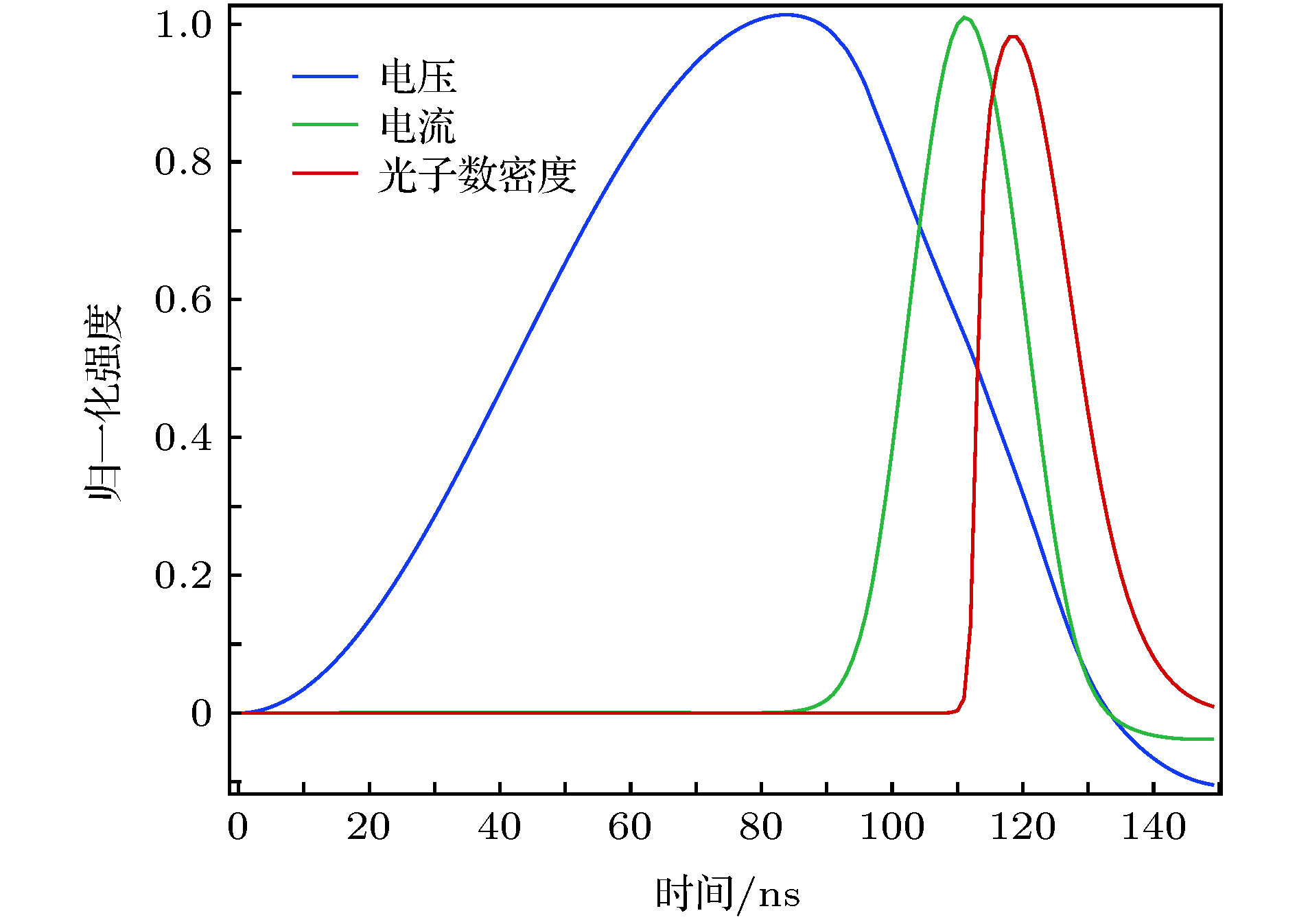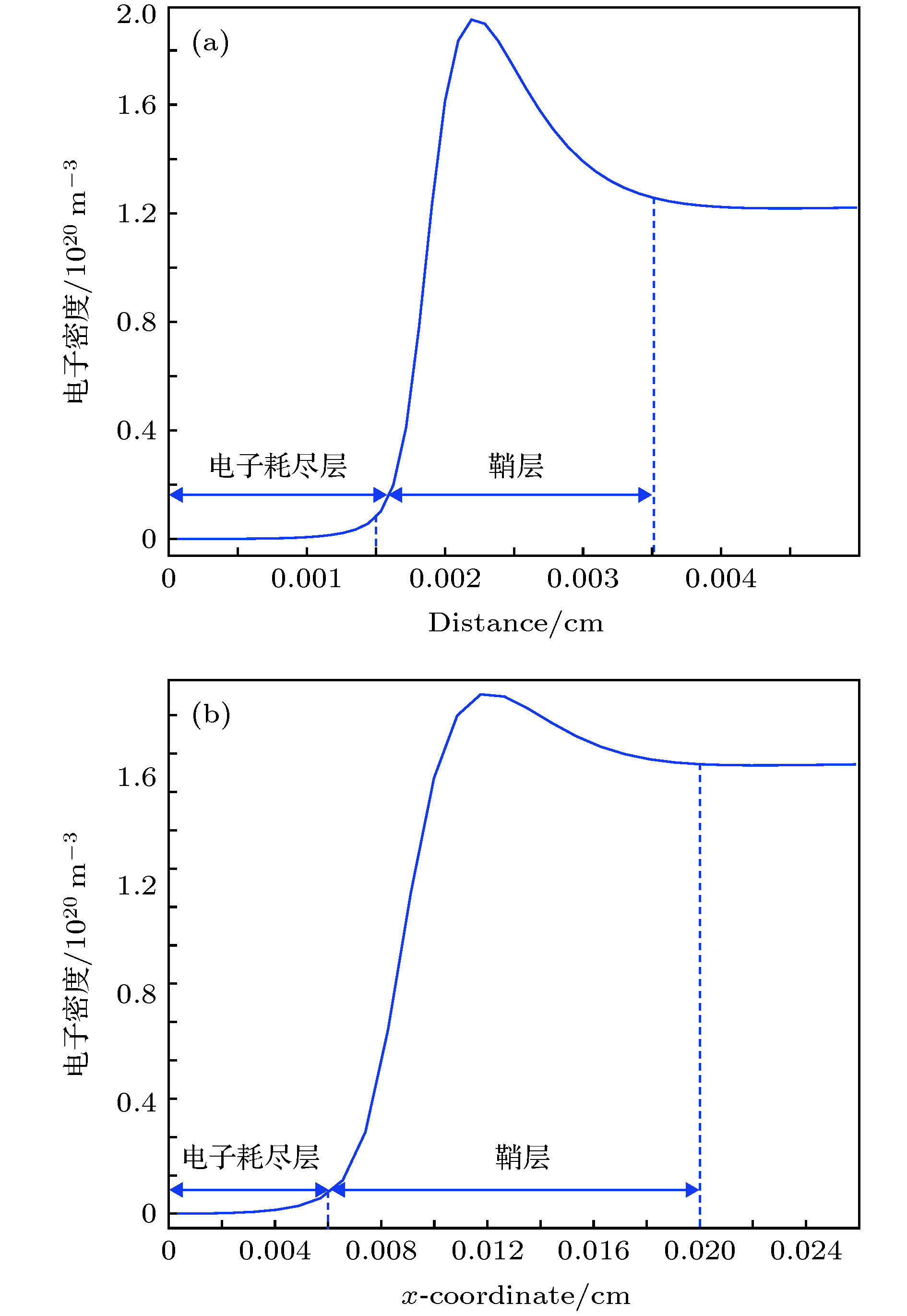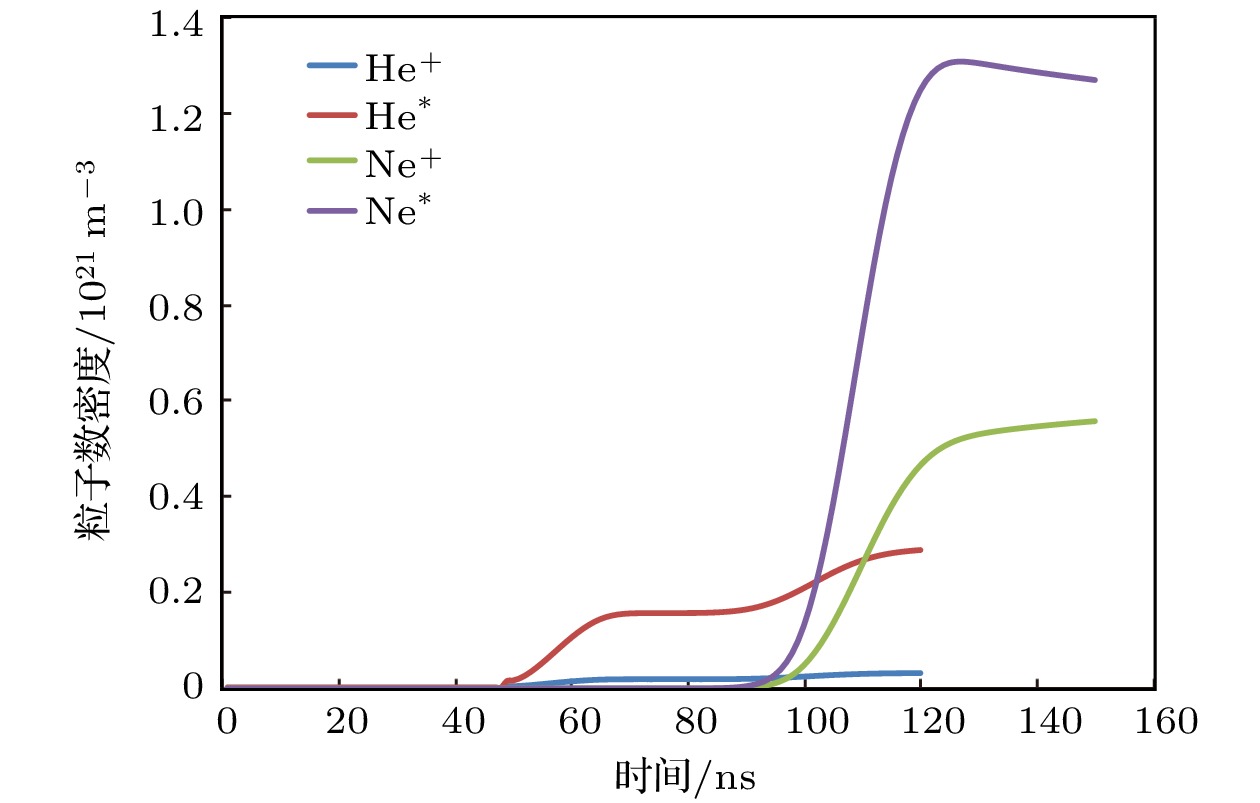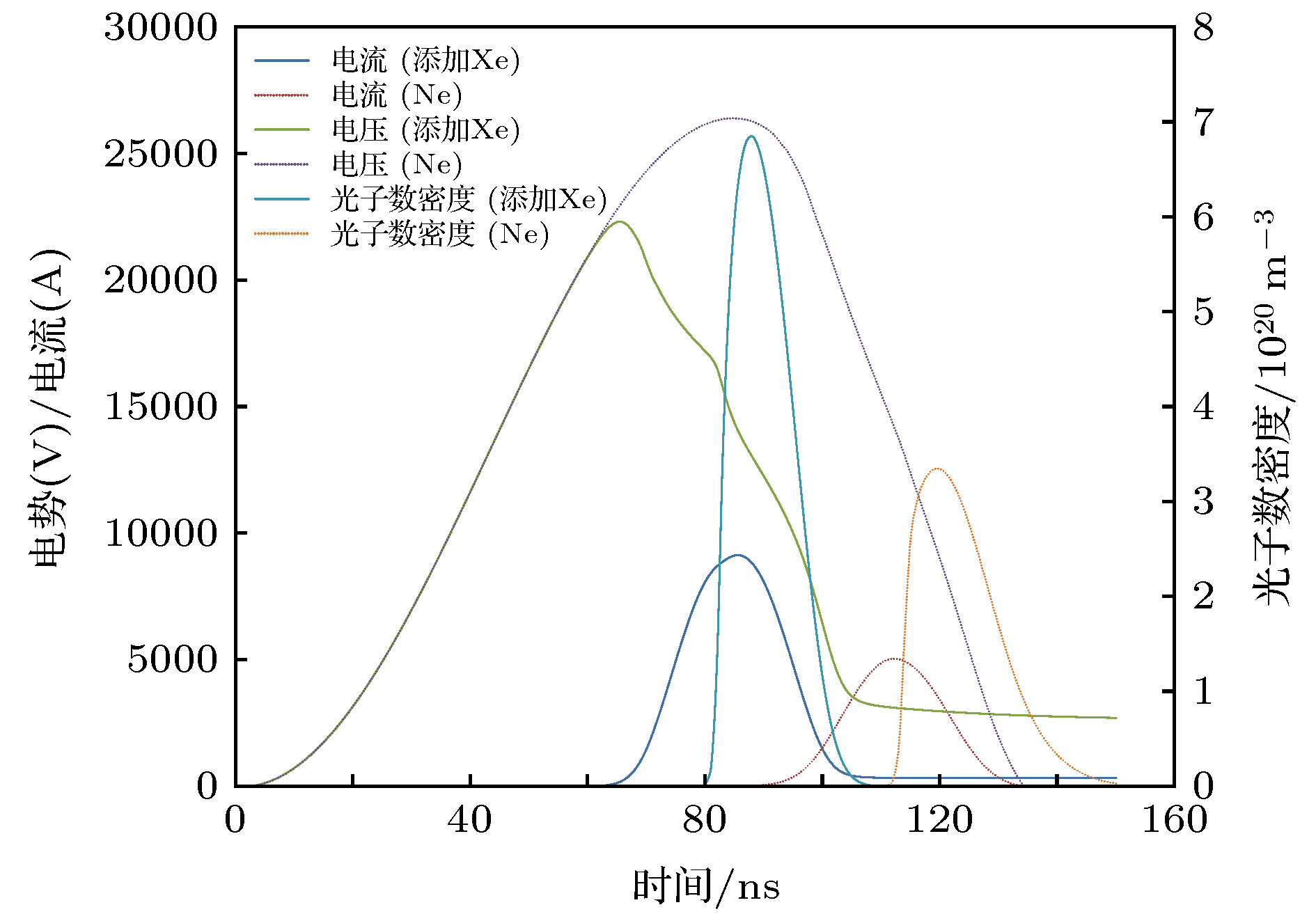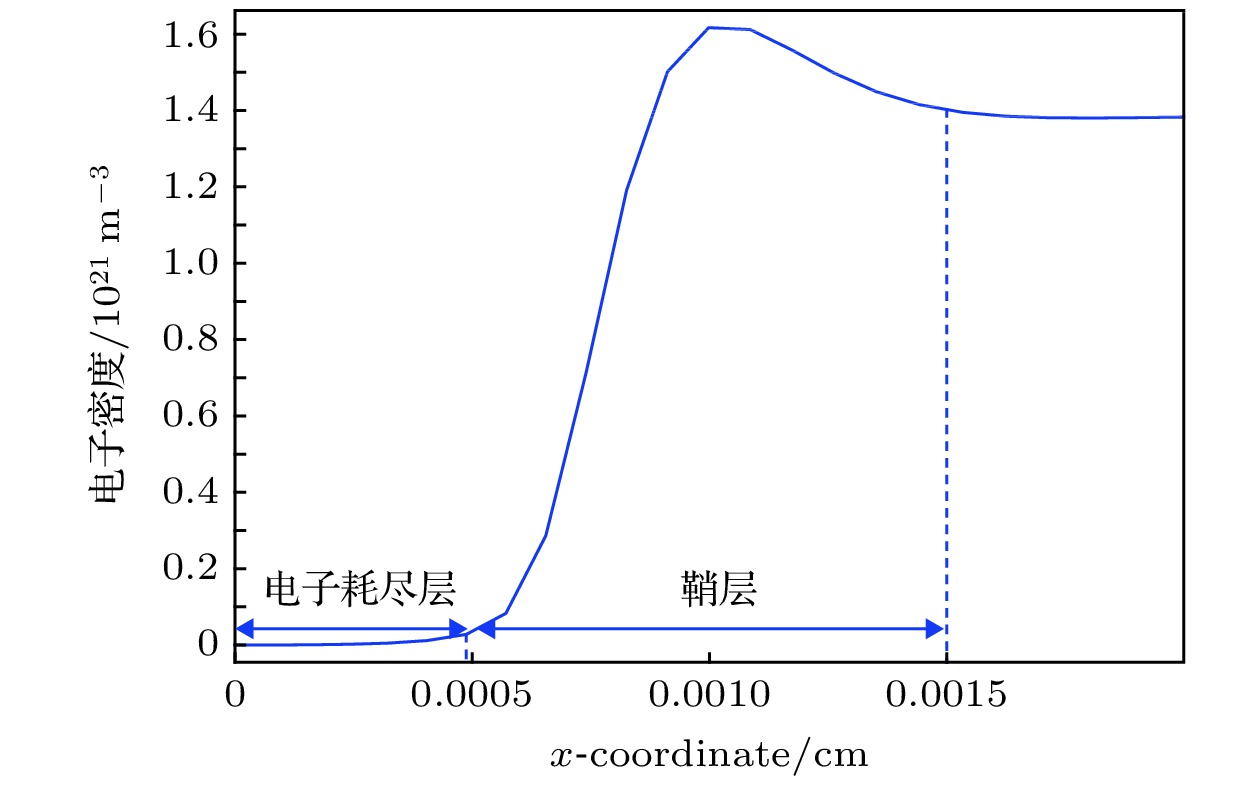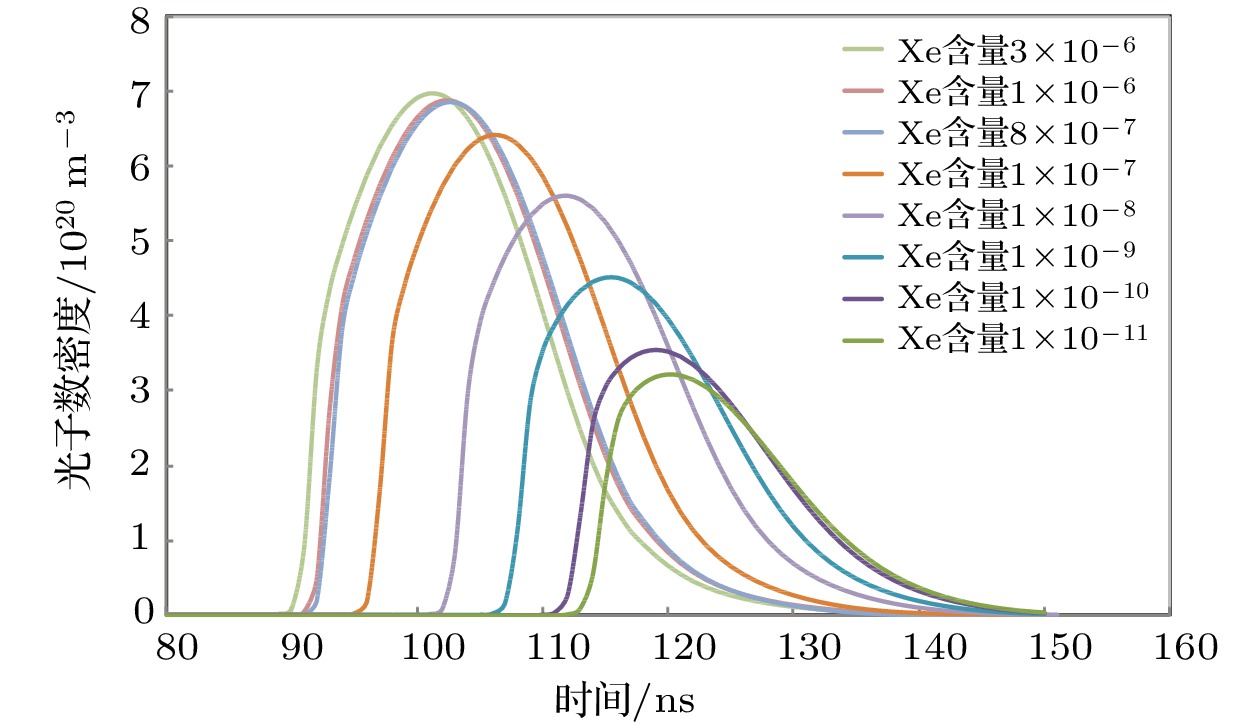-
Excimer laser is the current mainstream source of international semiconductor lithography. The stable operation of the laser system directly affects the working efficiency of the semiconductor lithography machine, so it is very important to optimize the laser system. The buffer gas commonly used in ArF excimer laser systems is He, Ne. In the early years, Shinjin Nagai and Mieko Ohwa have studied the output characteristics of the system when using He or Ne as a buffer gas from the aspect of pump efficiency and gain coefficient, and pointed out that using Ne instead of He has no obvious advantages in terms of efficiency. However, when Ne is used as the buffer gas, the reaction between Ne and electrons is more complicated. In addition to direct ionization and excitation reactions, it also contains a large amount of step ionization and secondary ionization, which releases free electrons. The stability of the system is improved, when Ne is used as the buffer gas. The ArF excimer laser system discharge characteristics in different buffer gases are analyzed based on fluid model in the paper. The role of photoionization is discussed. The simulation results show that the width of the electron depletion layer and the cathode sheath are both smaller, and the discharge stability is higher when Ne is used as the buffer gas. The expansion of the discharge region is accelerated and the threshold voltage of the discharge is reduced by adding Xe into Ne to trigger photoionization. The excimer laser discharge process is very complicated and is affected by many factors. Only two factors of the buffer gas and the photoionization process are studied in this paper. The simulation model will be extended from one-dimensional case to two-dimensional case in the future, and multiple physical factors of the ArF excimer laser system will be considered.
-
Keywords:
- ArF excimer laser /
- fluid model /
- electron density /
- photoionization
[1] Vladimir F, Slava R, Robert B, Hong Y, Kevin O, Robert J, Fedor T, Efrain F, Theodore C, Daniel B, William P 2008 Proc. SPIE 6924 69241R
 Google Scholar
Google Scholar
[2] Hirotaka M, Takahito K, Hiroaki T, Akihiko K, Takeshi O, Takashi M, Hakaru M 2016 Proc. SPIE 7980 79801I
[3] Hirotaka M, Hiroshi F, Keisuke I, Hiroaki T, Akihiko K, Hiroshi T, Takeshi O, Satoru B, Takashi S, Hakaru M 2018 Proc. SPIE 10587 1058710
[4] Mieko O, Minoru O 1986 J. Appl. Phys. 59 32
 Google Scholar
Google Scholar
[5] Shinji N, Hideo F, Yoshiyuki U, Jun Y, Akihiro K, Toshio G 1995 J. Appl. Phys. 77 2906
 Google Scholar
Google Scholar
[6] Mieko O, Minoru O 1988 J. Appl. Phys. 63 1306
 Google Scholar
Google Scholar
[7] Jiang C, Wang Y Q 2006 Plasma Sci. Technol. 8 185
 Google Scholar
Google Scholar
[8] 石锋 2008 硕士学位论文(大连: 大连理工大学)
Shi F 2008 M. S. Dissertation (Da Lian: Dalian University of Technology) (in Chinese)
[9] Yang C G, Duan L, Xu Y Y, Wang X B, Zuo D L 2012 Phys. Plasma. 19 093510
 Google Scholar
Google Scholar
[10] 罗时文, 左都罗, 王新兵 2015 强激光与粒子束 27 081006
 Google Scholar
Google Scholar
Luo S W, Zuo D L, Wang X B 2015 High Power Laser and Particle Beams 27 081006
 Google Scholar
Google Scholar
[11] 王倩, 赵江山, 罗时文, 左都罗, 周翊 2016 物理学报 65 214205
 Google Scholar
Google Scholar
Wang Q, Zhao J S, Luo S W, Zuo D L, Zhou Y 2016 Acta Phys. Sin. 65 214205
 Google Scholar
Google Scholar
[12] Thomos H J, Louis J P, Allen M H 1979 IEEE J. Quantum Electron. 15 289
 Google Scholar
Google Scholar
[13] Kulikovsky A A 1994 J. Phys. D: Appl. Phys. 27 2556
 Google Scholar
Google Scholar
[14] Akashi H, Sakai Y, Tagashira H 1994 J. Phys D: Appl Phys. 27 1097
 Google Scholar
Google Scholar
[15] Akashi H, Sakai Y, Tagashira H 1995 J. Phys. D: Appl. Phys. 28 445
 Google Scholar
Google Scholar
[16] Rauf S, Kushner M J 1999 J. Appl. Phys. 85 3460
 Google Scholar
Google Scholar
[17] Razhev A M, Shchedrin A M, Kalyuzhnaya A G, Zhupikov A A 2005 Quantum Electron. 35 799
 Google Scholar
Google Scholar
[18] Xiong Z, Kushner M J 2011 J. Appl. Phys. 110 083304
 Google Scholar
Google Scholar
[19] Levatter J I, Lin S C 1980 J. Appl. Phys. 51 210
 Google Scholar
Google Scholar
-
表 1 ArF准分子激光器等离子反应过程(He作为缓冲气体)
Table 1. Plasma reaction process of ArF excimer laser system (He is the buffer gas).
反应类型 反应过程 反应系数 参考文献 电子碰撞反应 Ar + e → Ar+ + 2e 计算玻尔兹曼方程得到 Ar + e → Arex + e 计算玻尔兹曼方程得到 Ar + e → Ar* + e 计算玻尔兹曼方程得到 Ar* + e → Ar+ + 2e 计算玻尔兹曼方程得到 F2 + e → F– + F 计算玻尔兹曼方程得到 He + e → He+ + 2e 计算玻尔兹曼方程得到 He + e → Heex + e 计算玻尔兹曼方程得到 He + e → He* + e 计算玻尔兹曼方程得到 中性粒子反应 Ar+ + 2 Ar → Ar2+ + Ar 2.5 × 10–31 cm6·s–1 [15] Ar+ + F– → ArF* 1 × 10–6 cm3·s–1 [15] Ar2+ + F–→ ArF* + Ar 1 × 10–6 cm3·s–1 [15] Arex → Ar + hγ’ 1.0 ns [15] Ar* + F2 → ArF* + F 8 × 10–10 cm3·s–1 [15] ArF*→Ar + F + hγ 42 ns [15] 受激辐射 ArF* + hγ → ArF + 2hγ 4 × 10–16 cm3·s–1 [15] 光电离 hγ + F– → F + e 1 × 10–17 cm3 [15] Arex + hγ → Ar+ + e 1 × 10–18 cm3 [15] 表 2 ArF准分子激光器等离子反应过程(Ne作为缓冲气体)
Table 2. Plasma reaction process of ArF excimer laser system (Ne is buffer gas).
反应类型 反应过程 反应系数 参考文献 电子碰撞反应 Ar + e → Ar+ + 2e 计算玻尔兹曼方程得到 Ar + e → Arex + e 计算玻尔兹曼方程得到 Ar + e → Ar* + e 计算玻尔兹曼方程得到 Ar* + e → Ar+ + 2e 计算玻尔兹曼方程得到 F2 + e → F – + F 计算玻尔兹曼方程得到 Ne* + e → Ne+ + 2e 计算玻尔兹曼方程得到 Ne + e → Ne+ + 2e 计算玻尔兹曼方程得到 Ne + e → Ne* + e 计算玻尔兹曼方程得到 中性粒子反应 Ne2* + e → 2e + Ne2+ (9.75 × 10–9) × (abs(Te))0.71 × exp(–3.4/abs(Te)) [16] Ne2+ + e → Ne* + Ne (3.7 × 10–8) × (abs(Te))–0.43 [16] Ar+ + 2Ar → Ar2+ + Ar 2.5 × 10–31 cm6·s–1 [15] Ar+ + F– → ArF* 1 × 10–6 cm3·s–1 [15] Ar2+ + F– → ArF* + Ar 1 × 10–6 cm3·s–1 [15] Arex → Ar + hγ’ 1.0 ns [15] Ar* + F2 → ArF* + F 8 × 10–10 cm3·s–1 [15] 2Ne* → Ne+ + Ne + e 5 × 10–10 cm3·s–1 [17] Ne+ + 2Ne →Ne2+ + Ne 4.4 × 10–32 cm6·s–1 [17] Ne* + Ne + Ne → Ne2* + Ne 4 × 10–34 cm6·s–1 [17] Ar + ArF* → 2Ar + F 9 e × 10-12 cm3·s–1 [15] Ne + ArF* → Ar + Ne + F 1 × 10–12 cm3·s–1 [17] F2 + ArF* → Ar + 3F 1.9 × 10–9 cm3·s–1 [15] 受激辐射 ArF* + hγ → ArF + 2hγ 4 × 10–16 cm3·s–1 [15] 光电离 hγ + F– → F + e 1 × 10–17 cm3 [15] Arex + hγ → Ar+ + e 1 × 10–18 cm3 [15] Xe + hγ’→Xe+ + e 阈值为 12.1 eV, 截面为1 × 10–16 cm2 [18] -
[1] Vladimir F, Slava R, Robert B, Hong Y, Kevin O, Robert J, Fedor T, Efrain F, Theodore C, Daniel B, William P 2008 Proc. SPIE 6924 69241R
 Google Scholar
Google Scholar
[2] Hirotaka M, Takahito K, Hiroaki T, Akihiko K, Takeshi O, Takashi M, Hakaru M 2016 Proc. SPIE 7980 79801I
[3] Hirotaka M, Hiroshi F, Keisuke I, Hiroaki T, Akihiko K, Hiroshi T, Takeshi O, Satoru B, Takashi S, Hakaru M 2018 Proc. SPIE 10587 1058710
[4] Mieko O, Minoru O 1986 J. Appl. Phys. 59 32
 Google Scholar
Google Scholar
[5] Shinji N, Hideo F, Yoshiyuki U, Jun Y, Akihiro K, Toshio G 1995 J. Appl. Phys. 77 2906
 Google Scholar
Google Scholar
[6] Mieko O, Minoru O 1988 J. Appl. Phys. 63 1306
 Google Scholar
Google Scholar
[7] Jiang C, Wang Y Q 2006 Plasma Sci. Technol. 8 185
 Google Scholar
Google Scholar
[8] 石锋 2008 硕士学位论文(大连: 大连理工大学)
Shi F 2008 M. S. Dissertation (Da Lian: Dalian University of Technology) (in Chinese)
[9] Yang C G, Duan L, Xu Y Y, Wang X B, Zuo D L 2012 Phys. Plasma. 19 093510
 Google Scholar
Google Scholar
[10] 罗时文, 左都罗, 王新兵 2015 强激光与粒子束 27 081006
 Google Scholar
Google Scholar
Luo S W, Zuo D L, Wang X B 2015 High Power Laser and Particle Beams 27 081006
 Google Scholar
Google Scholar
[11] 王倩, 赵江山, 罗时文, 左都罗, 周翊 2016 物理学报 65 214205
 Google Scholar
Google Scholar
Wang Q, Zhao J S, Luo S W, Zuo D L, Zhou Y 2016 Acta Phys. Sin. 65 214205
 Google Scholar
Google Scholar
[12] Thomos H J, Louis J P, Allen M H 1979 IEEE J. Quantum Electron. 15 289
 Google Scholar
Google Scholar
[13] Kulikovsky A A 1994 J. Phys. D: Appl. Phys. 27 2556
 Google Scholar
Google Scholar
[14] Akashi H, Sakai Y, Tagashira H 1994 J. Phys D: Appl Phys. 27 1097
 Google Scholar
Google Scholar
[15] Akashi H, Sakai Y, Tagashira H 1995 J. Phys. D: Appl. Phys. 28 445
 Google Scholar
Google Scholar
[16] Rauf S, Kushner M J 1999 J. Appl. Phys. 85 3460
 Google Scholar
Google Scholar
[17] Razhev A M, Shchedrin A M, Kalyuzhnaya A G, Zhupikov A A 2005 Quantum Electron. 35 799
 Google Scholar
Google Scholar
[18] Xiong Z, Kushner M J 2011 J. Appl. Phys. 110 083304
 Google Scholar
Google Scholar
[19] Levatter J I, Lin S C 1980 J. Appl. Phys. 51 210
 Google Scholar
Google Scholar
Catalog
Metrics
- Abstract views: 5397
- PDF Downloads: 60
- Cited By: 0















 DownLoad:
DownLoad:
